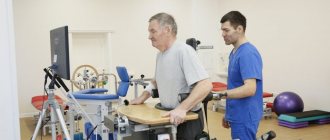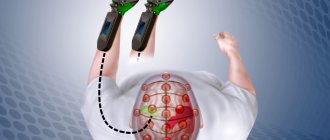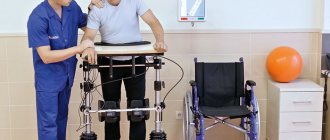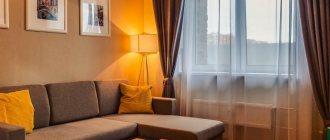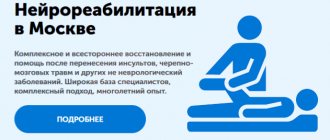Strokes are severe lesions of brain tissue caused by acute disorders of cerebral circulation. Against the background of prolonged spasm of the great vessels or their blockage, the ischemic form develops, and with rupture of the vascular wall and subsequent hemorrhage, the hemorrhagic form develops. In the first case, the symptoms may increase gradually, but in the second they always appear abruptly. At the same time, cerebrovascular insufficiency gives quite serious complications, one of them is paralysis and impaired fine motor skills after a stroke.
The recovery of such patients takes a very long time, but rehabilitation measures are needed as early as possible. And they need to be done under the supervision of experienced doctors. The specialists of the Verimed clinic will help the patient return to a full life.
What are fine motor skills?
Fine motor skills are clear, purposeful movements of the hands and fingers, controlled by the central nervous system. They are possible only with impeccably coordinated work of the brain, organs of vision and impulse-conducting nerves. There is an inextricable connection between motor activity and cognitive functions. Therefore, to fully restore fine motor skills after a stroke, not only the development of muscles and joints is required, but also exercises aimed at activating mental processes.
Restoring cognitive functions after stroke
Such important functions include speech recognition, memorizing information, logical thinking, concentration on something and, in general, human intellectual abilities. The less these important abilities are developed, the worse the general condition and well-being, the quality of a person’s life deteriorates and his life expectancy is reduced.
In older people, this can manifest itself as dementia, the causes of which are as follows:
- Severe bleeding in the brain.
- Affects a large volume on two hemispheres at once.
- 2 or more attacks occur immediately in succession.
- Impairments in those areas where cognitive skills are important for performance.
Characteristic symptoms do not always appear immediately and equally. Memory can deteriorate gradually, a person becomes inattentive, absent-minded, and soon memory lapses appear. This happens because there is a protracted process of degeneration and neural connections are gradually destroyed. The process is also intensified due to tissue ischemia and hypertension.
Patients are treated by a qualified neuropsychologist and occupational therapist, and it is also extremely important to work independently and perform exercises to remember information. Sometimes play therapy is used in the form of board games, crosswords and other things. Additionally, a course of medications can be used to stimulate brain activity.
Symptoms of impaired hand motor skills after a stroke
Clinical signs of motor activity disorders are:
- a sharp decrease in muscle strength (until complete disappearance);
- rapid muscle fatigue;
- severe impairment of joint mobility due to contractures;
- impaired coordination of movements;
- reduction or loss of local sensitivity.
Mobility and coordination may be further affected by pain and tissue swelling.
What interferes with the recovery of motor skills after a stroke?
Improving the motor activity of the hands and restoring fine motor skills after acute cerebrovascular accidents is a rather complex process. It can be accelerated by the use of effective treatments, or it can be slowed down. The reasons for the slowdown (and sometimes impossibility) of rehabilitation may be:
- incorrect diagnosis;
- late treatment;
- serious disturbances in the nutrition of local tissues (circulatory disorders);
- injuries or chronic pathologies of nearby areas;
- depressive and apathetic states of the patient;
- other mental disorders.
How is motor skills restored?
Combating hand motor dysfunction after a stroke requires an integrated approach. It is important to start treatment as early as possible. Timely therapy gives a much greater chance of quickly achieving positive results.
Please note: It is important to remember that every day without training contributes to the formation of a stereotype of lack of movement in the central nervous system. The direct consequence is tissue trophic disorders; Muscle atrophy and bone decalcification develop.
The main methods for developing hand motor skills in the recovery period after a stroke are massage and gymnastic exercises. Hands and fingers contain a huge number of nerve endings. If there is not an adequate signal for movement from the central nervous system, it is important to direct it from the fingers to the brain. Local massage prescribed to patients helps restore the transmission of nerve impulses - the so-called. reflex arc. In addition, the physical effect on tissue helps to improve local blood flow (microcirculation) and, accordingly, improve tissue trophism. Thanks to professional massage, used in combination with other techniques, you can quickly restore the ability to make active, precise movements, as well as tactile sensitivity.
Another important point when restoring fine motor skills after a stroke is regular exercise. Such exercises serve to prevent further decline in motor activity, prevent the development of muscle and joint contractures and promote functional restoration. Regular classes under the guidance of doctors help patients after a stroke quickly adapt to living conditions. The possibility of complete self-care is one of the most important tasks of rehabilitation techniques.
All exercises must be performed with both hands synchronously. Usually the mobility of one of them is impaired, and symmetrical actions will significantly speed up recovery. The duration of gymnastics should be no more than 8-10 minutes per hour, so as not to develop significant fatigue. It is important to repeat the set of movements regularly in order to re-form the muscle reflex and motor stereotype.
Examples of exercises:
- Clench your fingers into a fist, increasing your efforts in the final phase of the movement. Slowly unclench them, trying to imagine the action of each muscle.
- Place your hands on a horizontal surface with your palms facing up. Spread your fingers a little. Raise your little fingers while trying to keep the other fingers still. Lock them in this position for 3-5 seconds and relax. Perform a similar exercise sequentially for all other fingers.
- Place your palms on the table in the same way as in the previous exercise. Alternately make circles (clockwise and counterclockwise) with raised fingers, starting with the little finger.
To develop fine motor skills when recovering from a stroke, it is useful to use available materials. An excellent effect can be achieved by such actions as sorting through cereals, modeling from plasticine, fastening buttons and tying knots in a rope.
How long does rehabilitation after a stroke last at home in Krasnodar?
The exact recovery time varies from person to person and depends on the following factors:
- State of human health, existing diseases, characteristics of the body.
- The patient's age. With the advent of old age, it becomes much more difficult to restore the body.
- The intensity of the symptoms, the affected areas of the brain and what kind of attack the patient had.
On average, according to statistics, recovery from a primary stroke takes from 3 months to six months, depending on the complexity of the situation. In more complex cases, therapy using specialized methods and technologies can last up to 8 months.
After a secondary attack, the patient recovers for a whole year, the likelihood of a full return of all lost functions is reduced, some of them will remain with the patient. And with the third and subsequent strokes, the likelihood of falling into a coma or death increases significantly.
The influence of psychological attitude in the development of hand motor skills
A stroke often becomes a real tragedy for both the patient and his family. Brain damage provokes a decrease in mental activity and emotional lability. The patient can, as it were, “give up” on himself; he develops indifference, periodically replaced by outbursts of irritability and even anger. Apathy can be so great that a person does not want to do any exercises, try to get up, or move in any way.
To the objective reasons for the decrease in psychological activity are added internal experiences caused by a change in the usual lifestyle, the inability to look after oneself, and make some kind of global decisions. Immobility, isolation, fear of becoming a burden, fear of the future turn an active and freedom-loving person just yesterday into a completely weak-willed and apathetic one. He loses faith in his own strength, the possibility of developing hand motor skills and returning to his former life. Against this background, depression may appear, which will only worsen the situation. Such a person definitely needs not only the moral support of family and friends, but also the help of a doctor.
The experience of psychologists and psychiatrists allows us to quickly and accurately determine the root of the existing problem and find the “key” to both the patient himself and his relatives. Specialists will select the correct treatment regimen that will help motivate the patient to perform the necessary exercises, eliminating the main manifestations of apathy, depression and other mental disorders. And with faith in a speedy recovery, the restoration of fine motor skills of the hands after a stroke will go much faster.
Don't let a decadent mood ruin your future life - just call us now!
Choosing a treatment regimen
Recovery of a paralyzed arm after a stroke occurs successfully when a supportive team assists the victim with both specific and general rehabilitation goals. A team of doctors, physical therapists, psychologists, and family members plays a key role in restoring or improving the health of the victim. As mentioned above, reducing spasticity and increasing muscle strength are often the two main points of focus in the initial phase of rehabilitation when it comes to rehabilitating the right or left arm after a stroke.
The most important aspect of a recovery regimen is consistent training, where repetition and regularity are the best path to recovery. The recovery of lost or weakened functions is facilitated by neuroplasticity - the ability of the brain to form or restore connections. Like learning to play a musical instrument or acquiring vocabulary in a foreign language, the sufferer must activate the damaged part of the brain through persistent repetition of information.
Exercise is the most effective approach for restoring lost or damaged nerve pathways. Simple and repetitive activities such as grasping and lifting small objects, stringing beads on a string, and putting together jigsaw puzzles can be integrated into a rehabilitation program to restore fine motor skills after stroke. Each exercise is selected according to the level of difficulty depending on the existing limitations in the motor activity of the hands. Patients are also encouraged to perform activating exercises, such as catching and holding a rolling tennis ball on a table surface.
To quickly restore arm mobility after a stroke, specialists from the community of Irakli Pozharisky use complex training, which is a series of exercises aimed at:
- strengthening the ability of the upper limbs to overcome external resistance or resist it due to muscle efforts;
- increased range of motion in joints;
- reduction and normalization of skeletal muscle tone;
- elimination of pathological synkinesis (friendly movements);
- restoration of coordination abilities;
- elimination of sensitivity disorders;
- training and practical consolidation of independent household service skills.

